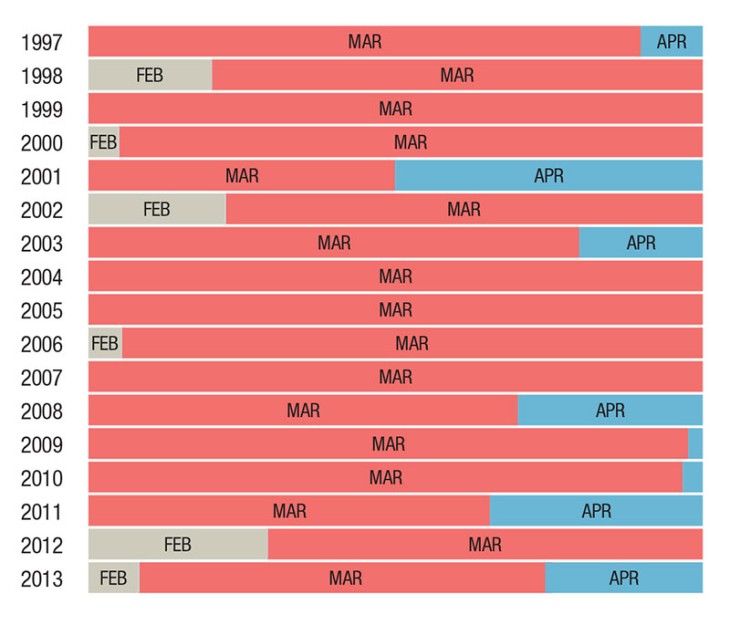Extreme weather was a big theme in the 2018 news cycle. People died from heat waves in Montreal and Tokyo, of all places. Parts of the Carolinas endured their third “historic” flooding event in the last four years. The American West burned with a ferocity that has become the new normal.
This is how the national media, which has a necessarily broad focus and an “if it bleeds it leads” mentality, covers climate change. And that’s not a criticism – The New York Times is right to be putting its resources into covering global weather disasters; how else would we hear about them? It’s the role of local media to cover local news and help readers tie what’s going on in their backyards to what’s going on internationally.
It’s in this spirit that I present this climate change story from our sugarbush. You might have read a recent national news story about how the five hottest years on record have all occurred in the last five years. Here’s an intensely local look at how those last five years fit within the context of two-plus decades’ worth of syrup production in our woods.
The numbers below show the percentage of our annual crop broken down by the month in which it was made. To make syrup, sap has to run, and for sap to run, it has to freeze at night and get warm – but not too warm – during the day. Production is completely weather dependent. We tap our trees after an educated guess as to when we’ll get the best six- to eight-week window of good sugaring weather. In our woods, mid-February has traditionally been tapping time; we’ve then made the lion’s share of syrup in March, though in some cold years we’ve carried on into the first week or two of April. Here are 17 years’ worth of numbers that bear this out:
I present the data this way instead of in a pie chart so you can see how there are, and have always been, outlier years: 2001 must have been cold, as we made half our crop in April. The next year, the season came early, and we made almost a quarter of our crop in February. But taken as a data set, you see the overwhelming historic correlation between sugaring weather and March.
Now when we look at the numbers from the last five years, we see the idea of March as prime sugaring time – an idea that’s held in these parts for at least as long as they’ve printed seasonal calendars – obliterated.
2014 and 2015 were polar vortex years, when the jet stream wobbled and March acted like February used to act. In 2016, we tapped on bare ground – in fact, I didn’t have a plow bill all winter. In both 2017 and 2018, we had temperatures in the 70s in mid-February, but in both years, winter came back with a reckoning – especially last year, when three March Nor’easters dropped 81 inches of snow in 8 days. It was just nuts. In this five-year window, we averaged 37 percent of our crop in March, as opposed to an 87 percent average over the previous 17 years.
Now there’s plenty of subjectivity here.
We don’t tap on a set start date, so maybe in some years, we hedged a little earlier or later than in others. Our operation is now twice as big as it was in 1997, so there’s more of an incentive to tap early just to get it all done. But these caveats don’t mean there’s nothing to see here. We’re one family tapping the same trees, so our biases are probably consistent. And while the caveats might swing the percentage points a bit from year to year, they wouldn’t account for so much variance. Plus, these records – coupled with our sugaring-related family memory, which stretches back to the 1950s – match the records and institutional memories of pretty much every other sugarmaker I know who’s been doing this for any length of time. I was talking with someone recently who is in the business of assigning risk to agricultural endeavors, and he said that the old model held that in seven out of ten years, the weather would be consistent; that number has flopped completely now, and cautious investors are figuring only three years out of ten will be “normal.”
A final important point is that from a production standpoint, we’ve done well despite the weirdness. Over the past five years, our seasons could be described as good, great, good, great, and poor. I think most any farmer would take four out of five. We’ve been able to do alright in part because of technology – namely, a vacuum system that maximizes sap runs in less than-perfect conditions. As the climate continues to change, time will tell whether we, and the thousands of other sugarmakers in the Northeast, will be able to keep up.




